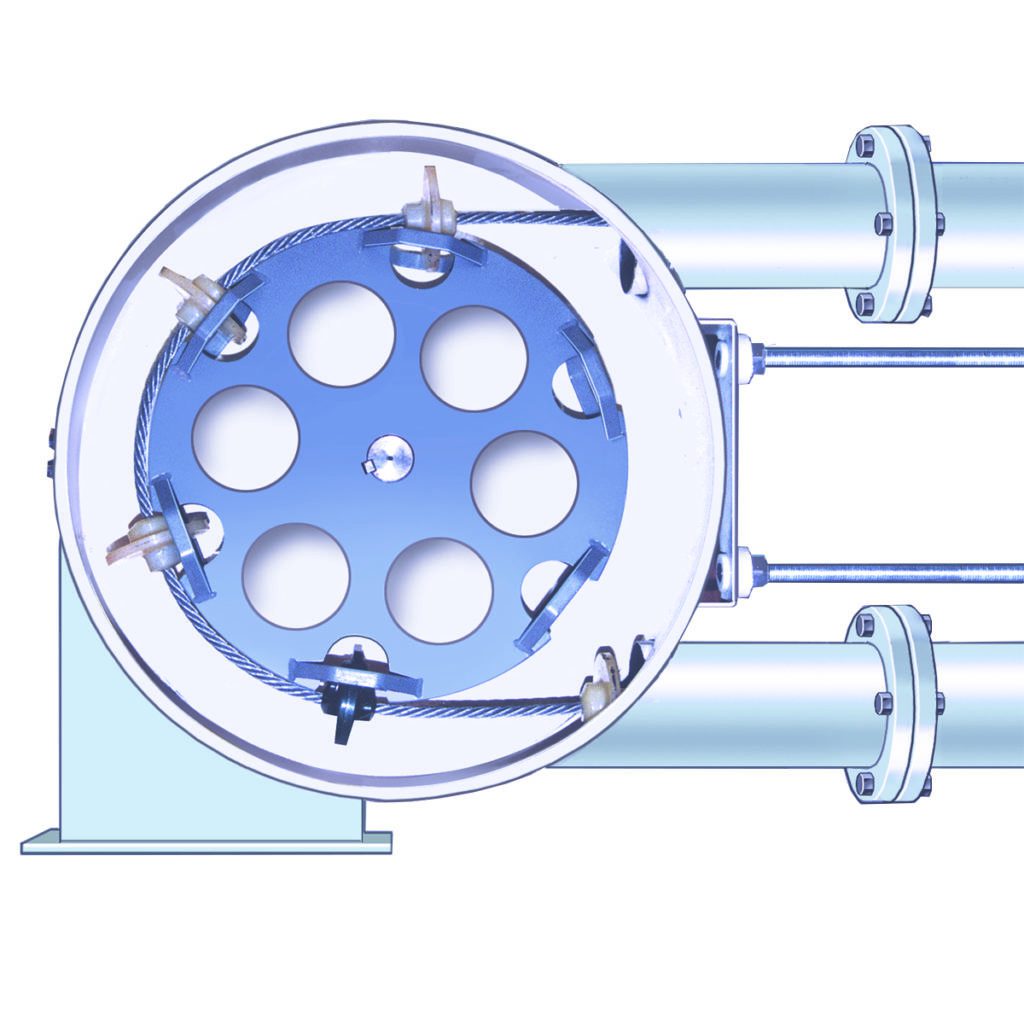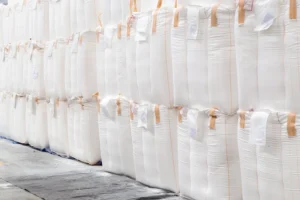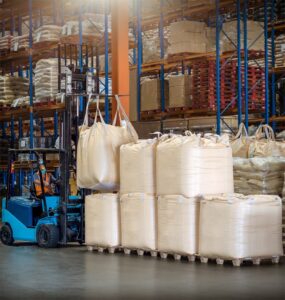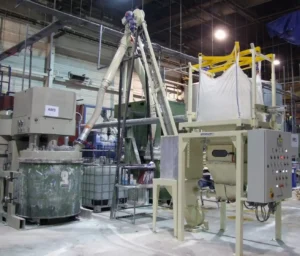Are you considering pneumatic or aero mechanical conveyors for your application? When working with dry bulk ingredients, moving them from one location to a point of use is an important part of your process that should be carefully considered. The material characteristics of your ingredients, along with your application parameters and budget, should be thoroughly evaluated to maximize benefits in regard to conveying rate, safety, cleanliness, efficiency, and return on investment.
Exploring Aero Mechanical Conveying as an Alternative to Dilute Phase Pneumatic Transfer Systems
When a dilute phase type of pneumatic transfer system is considered, one should always evaluate another option with considerable benefit – aero mechanical conveying. An aero mechanical conveyor transfers product in a dilute phase method. They utilize a vacuum created by the slipstream of discs being pulled through a continuous sealed tube using a sprocket driven by an AC motor gearbox. Pneumatic conveying utilizes a sealed tube arrangement as well. However, the motive air is created by using a blower system.

Pneumatic or Aero Mechanical Conveyors Considerations
When selecting the most suitable conveying solution for your operations, it’s essential to carefully consider a range of factors. The choice between pneumatic and aero mechanical conveyors depends on various key aspects, including the nature of the materials to be conveyed, the required conveying distance, and specific process requirements.
Venting Considerations
An aero mechanical conveyor is a balanced system. Ambient air is drawn into the belt conveyor system along with the ingredients. The ingredient is centrifugally discharged at the outlet of the conveyor. The displaced makeup air (or gas) is drawn back into the conveyor, creating a balanced system. There is no pressurization at the discharge point of the conveyor, and therefore, there are no special venting or filtering requirements.
With pneumatic industrial conveyor systems, consideration must be given to the motive air. For a vacuum system, a receiver is utilized that requires venting off of the motive air. Compressed air is also required for backwashing the filters and valves required for proper operation. For pressure systems, venting with filtration is required for the receiving vessel, with exhaust entering into the surrounding area or vented outside the building. One must also determine the potential requirement for dust explosion mitigation for any vessel over 8 cu ft in capacity.
Vacuum systems generally draw motive air from the surrounding area. Determine if special air conditioning or additional climate control will be required in these areas. This could greatly increase the cost of heating or air conditioning and should be factored into your budget.
Multiple Inlets and Multiple Outlets
Multiple inlets have no impact on the operation of aero mechanical conveyor technologies. The conveyor should be sized for the maximum required transfer rate so that it is not overloaded. When multiple outlets are utilized, an aero mechanical conveyor should be operated at half speed to ensure proper discharge at each outlet. A tube valve at each outlet provides a smooth path for the ingredient to pass through to subsequent outlets.
For a vacuum pneumatic system, each outlet requires a separate receiver, its own pressurized air supply for filter cleaning, as well as its own feed control valve and diverter valves. Additional piping is also required to feed to each individual usage point. For pressure systems, each receiving point requires venting of the motive air as well as filters, valves, diverters, and additional piping to direct product to each use point.
Power Consumption
Spiroflow aero mechanical conveyors are available in three sizes. The 3-inch conveyor delivers up to 9 cu ft/min, the 4” conveyor delivers up to 18 cu ft/min, and the 5-inch conveyor delivers up to 36 cu ft/min. The largest drive motor requirement is 7.5 to 10 HP through a gearbox. With these low HP requirements, the sound level is generally below 80 – 85 dBA at 5 ft.
Pneumatic systems require a 20 – 40 HP blower motor for comparable rates. Both power consumption and sound levels are much greater than those of aero mechanical conveyor solutions. Due to the sound pressure levels, blowers must have mufflers or be remotely installed. This, in turn, can result in the need for additional transfer line piping or special enclosures for sound suppression. These differences and their associated costs should also be factored into your evaluation.
Ingredient Properties
Aero mechanical conveyors are very gentle with the ingredient by handling a small pocket of product in a given space, generally at a ratio of 80% gas to 20% product. The disc slipstream carries product around any corners in the system. Since an aero mechanical conveyor handles pockets of ingredients, mixtures are maintained.
Although pneumatic conveying also utilizes a high gas-to-product ratio, the entire length of the circuit is under the same pressure or vacuum. The product, through centrifugal force, is hammered in bends and elbows, which can cause product degradation as well as wear issues on the conveying tubes. With longer distances, it is possible to experience product separation on mixtures that are a blend of products with differing properties and bulk densities.
Easily Cleaned
Generally, aero mechanical conveyors will transfer all material introduced into them, so cleaning is minimal. The use of air purging for the housings, as well as close tolerance sweeps, can help to ensure complete product transfer. Toolless hinged access points can be included for easy and fast access for dry cleaning of the system.
If dealing with flavor or color changes, a sacrificial material such as salt can scour the entire conveyor belt system quickly and then be disposed of. Wash gates and drains are included when the application requires the system to be washed. The aero mechanical conveyor creates an agitation effect, much like a dishwasher that completely washes the inside of the entire conveyor. Once drained, the conveyor can be operated empty to self-dry.
A pneumatic system can also be cleaned fairly easily by conveying salt as a scouring agent. For wet cleaning, a “pig” is pushed through the piping system using compressed air.
Comprehensive Evaluation of Conveying Systems – Considering Alternatives and Operational Costs
When it comes to selecting the right conveyor belt system for moving your ingredients, a thorough evaluation process is crucial. This involves not just looking at the immediate functionalities but also considering a wide range of variables that could impact the efficiency and cost-effectiveness of the system in the long run. It’s important to assess all available alternative conveyor technologies, weighing their pros and cons in the context of your specific needs.
To ensure you make the best decision for your specific needs, consider consulting with the experts at Spiroflow. Our team is equipped with the knowledge and experience to guide you through the selection process, ensuring that your conveying system is efficient, cost-effective, and tailored to your operational requirements. Reach out to Spiroflow today to explore the best conveyor belt solutions for your business.





